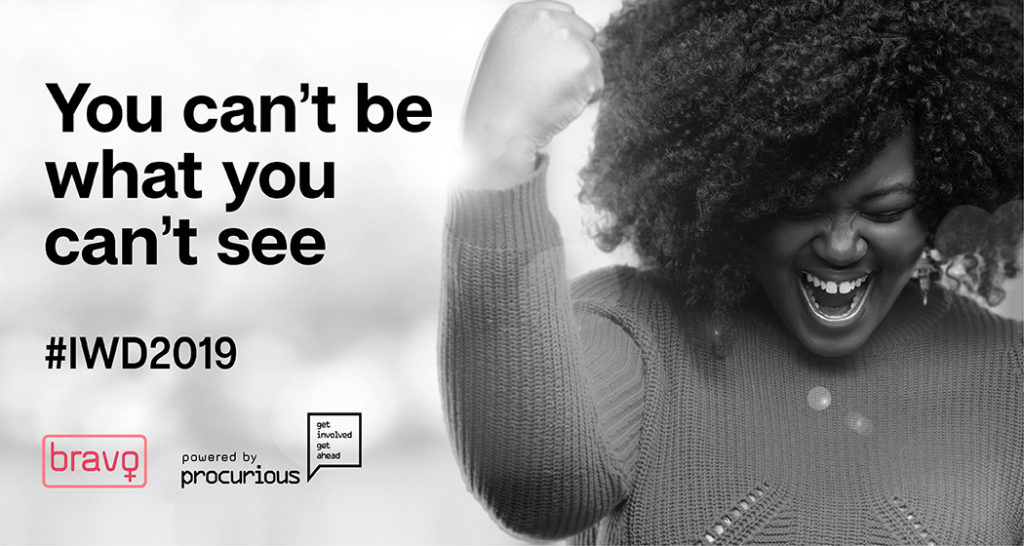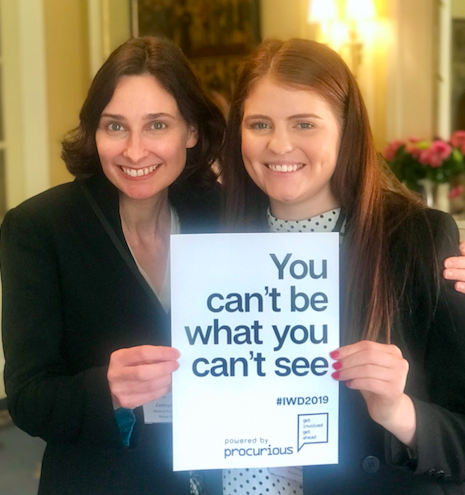How To Be Visible, Feel Authentic And Advance Your Career
You can’t be what you can’t see has become a catch cry for the lack of visibility of women in leadership roles.

It’s a bit of a Catch-22. To be prepared to be visible, to feel authentic and to advance your career is so much easier when you can follow women who’ve already blazed the trail. It’s so much easier to follow a path that someone has created than to forge your own. And what a hard slog if everyone is doing that!
To make your own path easier, find role models that you can emulate, help others find role models that they can follow, and this will increase your opportunity to be visible.
You can’t be what you can’t see
You can’t be what you can’t see has become a catch cry for the lack of visibility of women in leadership roles.
When there are no female role models, women’s belief in their suitability for leadership reduces. ‘You can’t be what you can’t see.’ The unavailability of female role models constrains the choices women make about their careers.
This has a significant impact on available talent. Girls are discouraged from pursuing careers that seem ‘male’. Women do not choose to pursue career opportunities in male-dominated areas.
This also limits organisations’ talent pools and pipelines. It compromises long-term future talent supplies across industries. It is strikingly evident in male-dominated professions, like engineering.
 For International Women’s Day 2019, Procurious are running a new campaign to improve the visibility of inspiring women working in procurement and supply chain. Get involved here.
For International Women’s Day 2019, Procurious are running a new campaign to improve the visibility of inspiring women working in procurement and supply chain. Get involved here. Why role models are so critical
Implicit self-beliefs are not simply private thoughts that remain confined to the mind. Rather, they impact intentions and goals. They encourage, or hinder, future professional success.
At entry to tertiary studies, and again at exit, young women agree that women-as-a-group are as suited to leadership roles as men. They express their own personal ambition to be leaders.
However, their unconscious beliefs about women as leaders, and their own leadership potential, do change. Without the right kind of interactions with role models, young women’s implicit self-beliefs diminish.
When all or most of their professors are male, their unconscious self-beliefs erode. They come to believe that women are better suited for support roles.
When women directly engage with successful female professors their unconscious self-beliefs improve. Frequent contact helps the association ‘woman = leader’ strengthen. However, only when contact is evaluated as meaningful do self-beliefs change: ‘I can be a leader’. A sense of similarity with role models is created by a meaningful, quality connection. Women’s leadership ambitions increase significantly when they engage with such role models.
This same pattern continues as women engage in the workforce. Women are less likely to pursue leadership roles or roles in masculine domains.
Young women are unaware of their implicit beliefs
They believe that the way they see themselves and their career choices are down to their own motivation, talent and interests. Instead, context powerfully drives their choices.
A senior leader described her daughter’s reduced ambition as like the erosion caused by acid rain. She started her career as a confident, ambitious young woman. She was clear about who she was and what she wanted. Over time, she had given up career goals and her dreams of success. A drop at a time, and devastating over time, her interest in her career was being eroded. She was shaping herself in line with expectations about what women should be like at work. Not confident. Not ambitious.
The ingredients that best predict improvement in implicit leadership self-beliefs are:
- Knowing that other women have achieved success in leadership or male-dominated domains, together with
- The experience of personally connecting with those women.
Who are your role models? Fabulous, successful female leaders that you would aspire to be like. If you don’t have three or four that you see personally, or feel strongly connected to, get to work and find them!
Leverage the role model effect
Increasing the number of women in key roles increases the availability of role models. It increases identification with leadership roles and helps grow future supply. A diversity of role models expands the leadership profile, and boosts innovation.
Achieving a critical mass of 35% or more women enables:
- Supportive alliances to form between women, increasing their retention;
- Recognition of women for their individual talents, rather than for stereotypical attributes; and
- Improved dynamics and culture of the larger leadership cohort.
The mere presence of women in small or ‘token’ numbers is not enough. It has been assumed that an initial appointment of one woman would lead to a flow of female appointments. Instead, hiring more women often stalls. A 20 year study of US Fortune 1000 companies found that hiring one top female executive did not lead to a second.
To achieve a critical mass of women in leadership, hiring patterns need to shift. A powerful way for that to happen is by male leaders advocating for gender-balanced leadership.
If you are in the hiring game, make sure that you are removing all the bias you can from your process, including at the initial stage – make sure your work climate is inclusive and welcoming.
Harness the power of male advocacy
CEO advocacy is the primary driver of a rapid achievement of critical mass. Advocating pro-diversity views promotes acceptance of diversity and helps to realise its benefits. Advocacy by influential figures is persuasive. It can change unconscious attitudes. As CEOs and senior leaders are mostly men, their role as advocates is key.
The best ways that men can champion gender equality are by:
- Being credible, trustworthy supporters of gender-balanced leadership,
- Delivering clear messages about gender balance and their commitment to it,
- Using persuasive power to change the minds of peers, and
- Working collegiately with women.
The way in which senior men include women, model openness to difference and challenge exclusionary behaviour by others creates a new example and new model for behaviour. Who are the senior men that you can encourage to be more visible in their advocacy?
Because it is still uncommon to hear men advocate in this way, when they do, it stimulates a mental double take. It challenges unconscious thinking.
Engaging senior men as advocates is also a positive way to tap into their desire to look good to others. The male champions of change program does this very effectively.
How many male advocates do you have in your network? What might you do to nurture one more? Maybe you are a male advocate for inclusion and innovation? What can you do to persuade those around you to join you as an advocate?
Reset visibility
Align yourself with this year’s IWD theme of #balanceforbetter. Time for a reset in our thinking. Let’s work on both women’s visibility as leaders, and on men’s visibility as champions for balanced leadership. You can’t be what you can’t see will be an even more powerful catch cry when used to encourage men to add their voices as advocates. Make advocacy visible!
Be visible, feel authentic and advance your career
Set your sights on making it to a senior level role, or help those around you to do so. Increase your confidence in your own leadership identity, by identifying specific role models. Role models help increase feelings of self-efficacy in leadership, the development of your identity as a leader, and increase your positive feelings about being a leader.
Creating a strong, confident story-line that is congruent with your own values, and having a presence that holds attention, are critical to succeeding in leadership roles, and work on these will help you to advance your career.
Get involved with International Women’s Day 2019
At Procurious we want women in procurement and supply chain management across the globe, and from every walk of life, to be the best that they can be and reach the highest of career heights.
But it’s hard to dream big and aim high without a little leading light to show you the way.
 Cathryn Vann, Head of Procurement – Accsys Group with Procurious’ Holly Nicholson
Cathryn Vann, Head of Procurement – Accsys Group with Procurious’ Holly NicholsonThat’s why, on this International Women’s Day, we’re campaigning to improve the visibility of women in procurement and supply chain management. We want to showcase some of the amazing things women are achieving for the professions and inspire you to do it too!
1.Sign up to join the Bravo group on Procurious
2. Download your very own you can’t be what you can’t see poster from the documents tab in the group
3. Print out the poster and snap a shot of yourself
4. Share the photo via the Bravo group on Procurious
5. Share the photo on Twitter, tagging @Procurious_ and #IWD2019 #BravoWomen and LinkedIn. In your post, nominate a woman in procurement who inspires you and ask her to take part too!